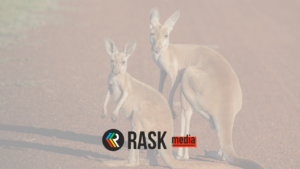The Qantas Airways Limited (ASX: QAN) share price is flying higher, it’s up more than 3% after releasing its FY21 half result.
Here’s what Qantas reported in HY21
Qantas reported that its revenue was down more than 75% to $2.33 billion. COVID-19 has hit its revenue by around $7 billion.
It experienced an underlying loss before tax of $1.03 billion and a statutory loss before tax of $1.47 billion.
Domestic performance
The airline business said that its domestic airlines business is generating positive underlying cashflow despite a 70% fall in both revenue and capacity. Underlying EBITDA (EBITDA explained) was positive at $71 million, though depreciation and amortisation took this to an EBIT loss of $407 million.
Qantas said that improved planning processes has allowed rapid network and schedule changes that minimise exposure to sudden border closures and maximise revenue opportunities. It announced 23 new domestic routes in response to changing demand patterns, with more planned for the second half.
Continued demand from the resources sector provided strong cashflow. Both Qantas and Jetstar saw extremely strong leisure demand during periods when travel restrictions eased. Jetstar saw a trebling of bookings in November, with more than 250,000 bookings during sale activity.
International and freight
Continued border closures meant international operations remained largely grounded in the first half. The international segment saw a $86 million loss at the underlying EBITDA level, whilst the EBIT loss was $549 million.
There was a record performance by Qantas Freight with little passenger flights causing a temporary global shortage of space for cargo whilst e-commerce is surging.
Repatriation services for the Australian Government continue.
Qantas Loyalty
This division generated a cash contribution of $454 million despite the travel limitations and a 10% decline in total credit card spending. Underlying EBIT was down 29% to $125 million.
Balance sheet
Balance sheets are key during this period of instability and lack of demand. Qantas said it is one of only eight airlines in the world to retain an investment grade credit rating through the pandemic.
At 31 December 2020 it had total cash of $2.6 billion, with net debt of $6.05 billion.
Outlook
The airline is currently going through a structuring that aims to save at least $1 billion a year from FY23 onwards. The interim target of $600 million in permanent savings for FY21 is on track. This involves 8,500 staff being let go, with 5,000 already gone. A total of 14,500 full time roles are now ‘stood up’ whilst 11,000 are stood down, most of those are associated with international flying.
Some of the cost savings are being achieved through new deals with major travel agents, reducing office costs and renegotiating supplier deals.
Domestic border closures continue to hamper the airline’s recovery. Qantas believes that international travel will restart before the end of the year, with an expectation of more flights between Australia and New Zealand from July 2021.
It expects domestic capacity to increase to 60% of pre-COVID levels in the third quarter of 2021 and 80% in the fourth quarter of 2021.
International capacity is currently 8% of pre-COVID levels, though this level of activity reduces cost and lead times for re-activating the international network.
It’s continuing to aim for positive net free cash flow, excluding one-offs. Net debt is expected to peak in the second half of FY21, with balance sheet repairing to begin in the fourth quarter.
This was both a difficult and promising report from Qantas – there is a path to recovery for the business. It’s just a question of how long it takes.
Before you consider Qantas, I suggest getting a free Rask account and accessing our full stock reports. Click this link to join for free and access our analyst reports.




